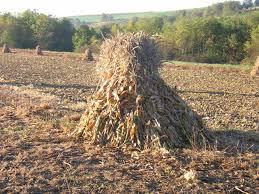By Charles Mwangi
Nyandarua County, nestled in the central highlands of Kenya, is undergoing a profound agricultural awakening. While it has long been known for its lush landscapes and rich volcanic soils, what is emerging now is a dynamic transformation: a quiet revolution driven by commercial farming that is redefining the region’s economic identity and social fabric.
A County Built on Agriculture
In Nyandarua, agriculture is more than an occupation—it’s a way of life. With approximately 69% of its population engaged in agriculture and the sector contributing over 73% to household incomes, the county’s economy is deeply entwined with the soil. But what distinguishes Nyandarua is its shift from traditional subsistence farming to a more structured and market-oriented commercial agriculture system.
Potato farming dominates this landscape, with over 37,000 hectares under cultivation, supporting nearly 70,000 smallholder farmers and generating an annual production value surpassing KES 8 billion. This is complemented by a robust dairy industry, where Nyandarua is recognized as one of Kenya’s top milk-producing regions. These twin pillars—potatoes and milk—anchor a diversified farming economy that also includes export-oriented horticulture, poultry, and emerging climate-smart crops like pomegranates.
Fertile Fields, Daunting Challenges
Despite this impressive agricultural output, the journey of Nyandarua’s farmers is riddled with challenges. The road to market is quite literally broken—rural roads are often impassable during the rainy season, cutting off farmers from buyers and leading to significant post-harvest losses. These logistical nightmares are compounded by a lack of storage infrastructure, volatile market prices, pests and diseases, and inadequate access to quality seeds, fertilizers, and affordable credit.
The climate crisis has not spared Nyandarua either. Farmers recount stories of unpredictable weather—flash floods, long dry spells, and chilling frosts—that disrupt planting cycles and wipe out harvests. The county’s heavy dependence on rain-fed agriculture has made it increasingly vulnerable. Climate change is not a looming threat; it is a daily struggle in the fields of Nyandarua.
Resilience and Reinvention
Yet, amidst these challenges, Nyandarua’s farmers are adapting and innovating. The county’s shift towards commercial agriculture has brought with it a series of interventions—both government-led and community-driven—that are beginning to bear fruit.
The National Agricultural Policy and the Bottom-Up Economic Transformation Agenda (BETA) have identified potatoes as a strategic crop. The Agricultural Sector Transformation and Growth Strategy (ASTGS) emphasizes value chain development, while county-specific policies such as the Nyandarua Potato Strategy aim to streamline production and marketing. Fertilizer subsidies, dairy development programs like the County Heifer Project, and targeted extension services offer a lifeline to many smallholders.
Non-governmental actors also play a critical role. The Potato Value Chain Capacity Building (PCB) Project has improved yields and reduced losses. Organizations like CARE-USA are championing poultry and pomegranate farming as climate-resilient alternatives. The IKI Small Grants initiative promotes sustainable water and soil management. And behind the scenes, institutions like KALRO and Agricultural Training Centres are conducting vital research and farmer education.
From the Soil to the Market
Market access remains both a bottleneck and an opportunity. For potatoes and horticultural crops, traders and agribusinesses connect Nyandarua’s produce to consumers in Nairobi, Mombasa, Nakuru, and beyond. However, middlemen dominate the scene, often leaving farmers with the short end of the stick. Milk marketing, on the other hand, is increasingly structured. Farmers sell through three main channels: traditional vendors, private processors, and cooperatives. Private processors and cooperatives are gaining traction, offering better returns and additional services such as veterinary care and cooling facilities.
Access to real-time market information is also improving. Tools like ViaziSoko, introduced by the PCB project, help farmers track market trends and negotiate better prices. Youth intermediaries and farmer cooperatives are bridging the gap between remote villages and urban markets.
Stories of Success and Transformation
Some farmers are not just surviving—they are thriving. Take Mr. and Mrs. Kiragu, for example. What began as a modest dairy and vegetable farm has transformed into a model agribusiness enterprise, complete with training facilities and export contracts for snow peas and French beans. Their story mirrors the broader trend of diversification, resilience, and entrepreneurship emerging across the county.
Initiatives like the Kenya Sustainable Potato Initiative are building a stronger seed system, which is essential to enhancing potato yields and reducing disease spread. These local success stories underscore the immense potential of Nyandarua’s agricultural sector when farmers are equipped with the right tools, knowledge, and market linkages.
Unlocking the Future
Nyandarua County stands at a pivotal crossroads. Its fertile land and industrious farmers have laid a strong foundation for a thriving agricultural economy. But to truly harness its potential, strategic investments and reforms are needed. These include upgrading infrastructure, strengthening extension services, expanding access to quality inputs and credit, and building more efficient market systems.
The path forward also calls for a focus on climate resilience, gender inclusivity, and youth engagement. Promoting climate-smart agriculture and embracing technological innovation can safeguard productivity in the face of a changing climate. Empowering women and young farmers through training, financial services, and leadership roles can further invigorate the sector.
As Kenya seeks to secure its food systems and spur rural development, Nyandarua County offers a compelling blueprint—of challenges met with resolve, and potential waiting to be realized. The future of agriculture here is not just about yields and profits; it is about sustaining lives, building communities, and nurturing a legacy of resilience and prosperity.
Quick Facts: Nyandarua County Agriculture
- Main Crops: Potatoes, cabbages, carrots, peas, snow peas, French beans, maize
- Key Livestock: Dairy cows (mainly crossbreeds), poultry, sheep and goats
- Annual Potato Value: KES 8 billion+
- Households in Agriculture: 69% of population
- Main Challenges: Poor infrastructure, climate change, pest & disease, market volatility, input costs
- Success Stories: Kiragu Farm (horticulture + dairy), PCB Project (potato productivity), CARE-USA (poultry diversification)
Bottom Line: With smart policies, bold investments, and community-driven innovation, Nyandarua can move from promise to powerhouse in Kenya’s agricultural transformation.
